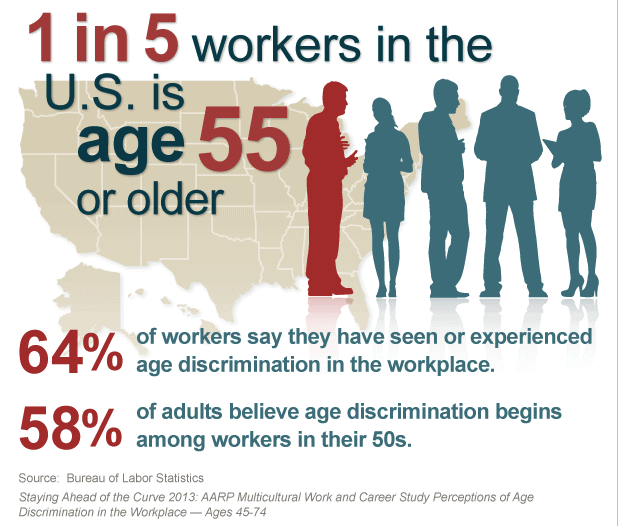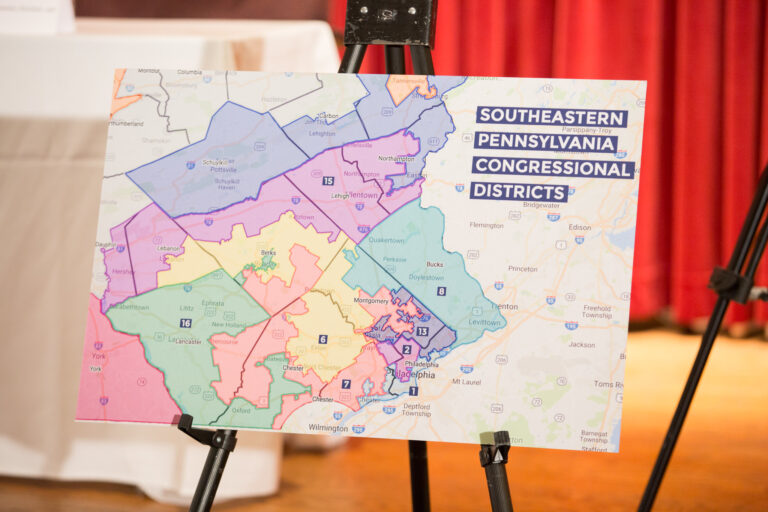
Andrew Strom is a union lawyer based in New York City. He is also an adjunct professor at Brooklyn Law School.
According to CNN’s exit polls, Donald Trump won the Presidency due to his support among voters who were over 45. Hillary Clinton was favored by 53% to 39% for voters under age 45, while Trump won older voters by a 52% to 44% margin. I’m sure very few of those Trump voters noticed that the Seventh Circuit Court of Appeals, which covers Indiana, Illinois, and Wisconsin, recently ruled that a major provision in the Age Discrimination in Employment Act (ADEA) does not protect job applicants, and that four Trump-appointed judges provided the decisive votes.
Many of the middle-aged Trump voters have economic anxiety—perhaps they were victims of corporate downsizing and had to accept a lower paying job, or a nearby manufacturing plant may have closed and they saw how hard it was for their friends and neighbors to find new jobs in middle age. There is no reason to think that most people who voted for Trump wanted to make it easier for companies to weed out older job applicants. Yet, this is what they got as a result of the decision in Kleber v. CareFusion Corporation.
Dale Kleber, a fifty-eight year-old man, saw a job opening he was interested in, and he applied. There was one catch—he had more than the 3 to 7 years of relevant experience listed in the job description. When he was turned down, he sued under the ADEA, arguing that the cap on experience had the effect of disqualifying older applicants. The ADEA has two main provisions prohibiting discrimination by employers, Section 623(a)(1) and 623(a)(2). Here is the relevant language:
It shall be unlawful for an employer
(1) to fail or refuse to hire or to discharge any individual or otherwise discriminate against any individual with respect to his compensation, terms, conditions, or privileges of employment, because of such individual’s age;
(2) to limit, segregate, or classify his employees in any way which would deprive or tend to deprive any individual of employment opportunities or otherwise adversely affect his status as an employee, because of such individual’s age.
The Supreme Court has held that subsection 1 prohibits intentional discrimination (disparate treatment), and subsection 2 prohibits unintentional discrimination (disparate impact). The issue in Kleber’s case was whether subsection 2 applies to job applicants, or only to those who the employer already employs. Four judges on the Seventh Circuit thought that subsection 2 should apply to applicants, but eight judges, including all four Trump appointees, decided that the disparate impact provision only applies to individuals who the employer already employs.
How did the majority reach this result? They started by ignoring a 1971 Supreme Court decision, Griggs v. Duke Power Co., that interpreted what was then identical language in Title VII of the 1964 Civil Rights Act. In Griggs, the Court stated that it was deciding whether an employer is prohibited “from requiring a high school education or passing of a standardized general intelligence test as a condition of employment in or transfer to jobs” (emphasis added) where those requirements tended to disqualify African-Americans at much higher rates than whites. Despite this statement, the Kleber majority asserted that Griggs did not address hiring because the named plaintiffs in Griggs already worked for Duke Power. In fact, the district court decision in Griggs makes clear that the case was a class action brought on behalf of both current employees and others “who may hereafter seek employment” with Duke.
The Kleber majority also refused to consider what they admitted was Congress’s obvious purpose in passing the ADEA. Remarkably, the majority opinion states that “[n]obody disputes… Congress’s clear aim of enacting the ADEA to prevent age discrimination in the workplace by encouraging the employment of older persons, including older job applicants.” But, for right-wing judges, Congressional purpose is largely irrelevant. Instead, far-right judges are increasingly becoming “textualists,” focusing on grammatical nuances rather than legislative history to interpret disputed statutory provisions. Even if you thought that in the abstract this is the best way for judges to interpret statutes, one problem with this approach is that these judges have changed the rules after Congress wrote the statutes. Back in 1967, the year the ADEA was enacted, it was unremarkable for a unanimous Supreme Court to assert that “we are guided by the familiar canon of statutory construction that remedial legislation should be construed broadly to effectuate its purposes.” Thus, the drafters of the ADEA had no reason to expect that judges would be acting as grammarians.
Another problem with textualism is that it often points in opposite directions. The majority relied heavily on the phrase “status as an employee” in subsection (2), and asserted that the provision does not apply to applicants because applicants have no “status as an employee.” But, the dissent pointed out that courts often refer to individuals being denied status of one sort or another, and, accordingly, denying someone their status as an employee is “adversely affecting” their status as an employee. The majority also has a hard time explaining away the phrase “deprive any individual of employment opportunities.” Here’s their attempt at an explanation: “[O]rdinary principles of grammatical construction require connecting ‘any individual’ (the antecedent) with the subsequent personal possessive pronoun ‘his,’ and upon doing so we naturally read ‘any individual’ as referring and limited to someone with ‘status as an employee.’ By contrast, one of the dissents points out that the word “individual” in subsection (1) includes applicants for employment and normally the same word in adjacent paragraphs means a single thing.
I don’t think it’s a coincidence that the textual analysis used by the majority in Kleber happens to line up with Republican policy preferences. Decisions like this one don’t get a lot of attention from the media. But, this is what happens when we elect a Republican President and Republican Senators – rights we thought we had won get chipped away. While Republican appointed judges have long been more conservative than Democratic appointees, so far the Trump appointees are more predictably ideological than their predecessors. For example, Judge Frank Easterbrook, a Reagan appointee, and Judge Ilana Rovner, a George H.W. Bush appointee, both dissented in Kleber. And, when the en banc Eleventh Circuit decided the same issue in 2016, some Democratic appointees sided with the employer. The challenge for the Democrats in 2020 is how to explain the cumulative effect of these kinds of relatively low-profile decisions in a way that gets through to the voters who were taken in by Trump’s promise that he would help them.






Daily News & Commentary
Start your day with our roundup of the latest labor developments. See all
December 16
Second Circuit affirms dismissal of former collegiate athletes’ antitrust suit; UPS will invest $120 million in truck-unloading robots; Sharon Block argues there are reasons for optimism about labor’s future.
December 15
Advocating a private right of action for the NLRA, 11th Circuit criticizes McDonnell Douglas, Congress considers amending WARN Act.
December 12
OH vetoes bill weakening child labor protections; UT repeals public-sector bargaining ban; SCOTUS takes up case on post-arbitration award jurisdiction
December 11
House forces a vote on the “Protect America’s Workforce Act;” arguments on Trump’s executive order nullifying collective bargaining rights; and Penn State file a petition to form a union.
December 8
Private payrolls fall; NYC Council overrides mayoral veto on pay data; workers sue Starbucks.
December 7
Philadelphia transit workers indicate that a strike is imminent; a federal judge temporarily blocks State Department layoffs; and Virginia lawmakers consider legislation to repeal the state’s “right to work” law.